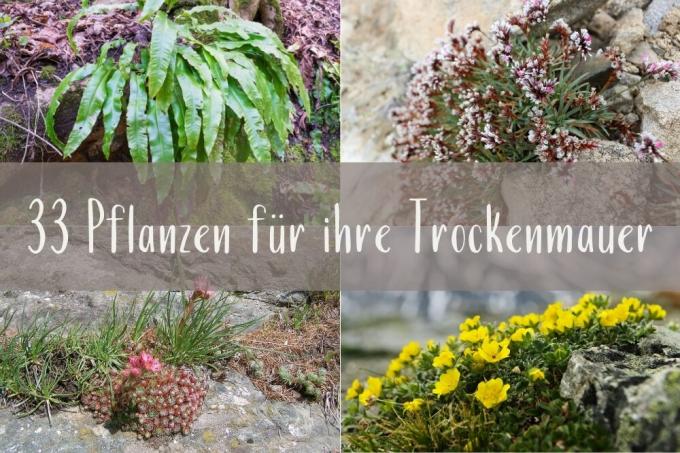
table of contents
- Wall plants for the sun
- For the penumbra
- For the shade
- For the top of the wall
- frequently asked Questions
What would a near-natural garden be without dry stone walls, ideally made of natural stone? Animals find shelter here and with plants it offers numerous, very individual and extremely decorative design options.
In a nutshell
- Natural stone wall is a striking, visual and functional design element
- Serves as a retaining wall, structural element, wind and privacy screen and for
- Property boundary
- Between the stones, own small habitats for small animals and plants
- Plants for dry stone walls must meet certain requirements
Wall plants for the sun
Bitterwort 'Rainbow' (Lewisia cotyledon)
- Bitterwort convinces with different flower colors and shades
- Flowers partly simple, partly half-double
- Flowering time from May to June
- Leaves arranged in evergreen, succulent rosettes of leaves
- Grows 5-25 cm in height and 15-20 cm in width
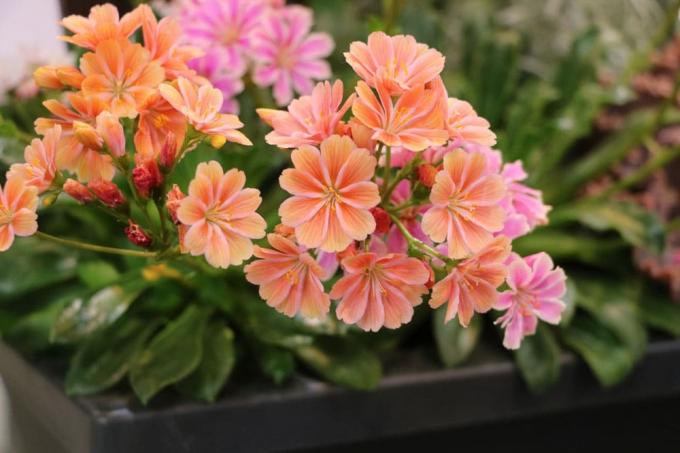
Rock stone herb (Aurinia saxatilis)
- Deciduous subshrub with bright yellow flowers
- Strongly branched inflorescences
- Blooms as early as April
- Reaches heights of 20 to 40 cm
- Forms large, pillow-like cushions
- The foliage is gray-green and tomentose
Tip: Pruning is recommended between June and July.

Greek blue pillow (Aubrieta deltoidea)
- Evergreen, vigorous cushion shrub
- Known for its lush pile of light purple flowers
- Flowering time from April / May to June
- Small plants 5-20 cm high
- Spread over the dry stone wall via ground-covering foothills
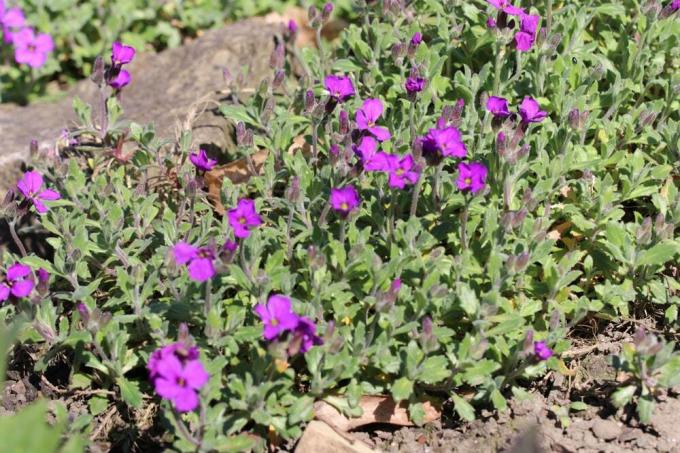
Hop easter 'Kent Beauty' (Origanum rotundifolium)
- Pretty dainty plant up to 20 cm high
- Grows bushy, clumpy, cushion-forming
- Flowering period from June to September
- Filigree, hop-like, pale pink flowers
- Leaves narrow, dark green and fragrant, slightly hairy.
Tip: Cut back the plant in late autumn and protect it from the sun when it is cold.
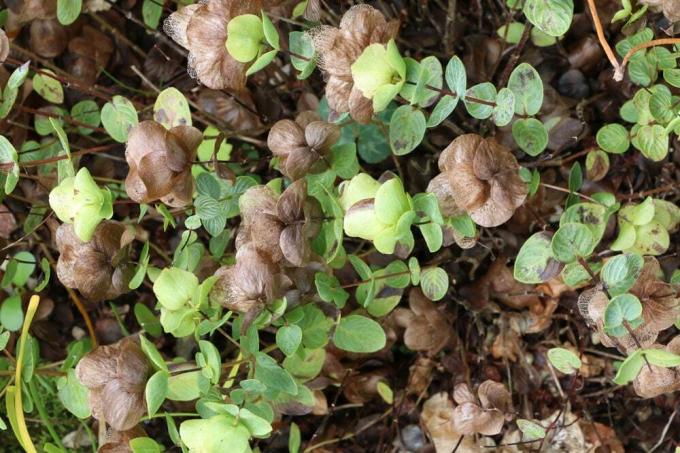
Hungerflower (Draba verna)
- Rosette-forming plant for natural stone wall
- Forms bright yellow, umbel-like cushions of flowers
- Flowering time from March to April
- Growth height of 10-15 cm
- Undemanding and robust
- Thrives on very poor soils
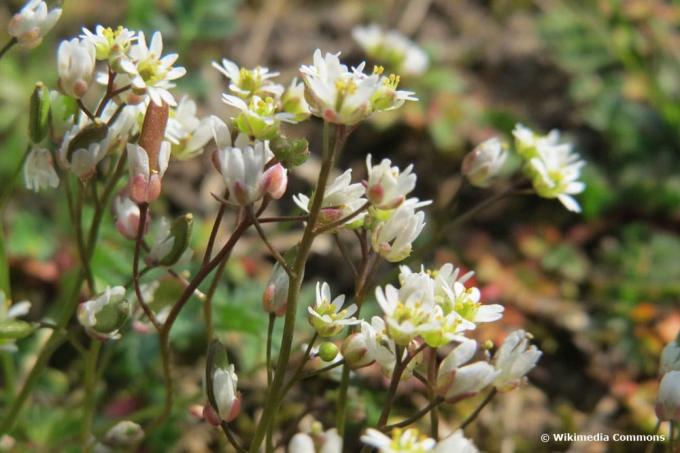
Hedgehog Cushions (Acantholimon)
- Hedgehog cushion forms spiky, evergreen, densely arched cushions
- After several years 10-30 cm high and up to 100 cm wide
- Bright light or dark pink flower spikes
- Flowering period from July to August
- Lush green foliage, forming cushions
Tip: The hedgehog cushion thrives in wall joints and on wall crowns.
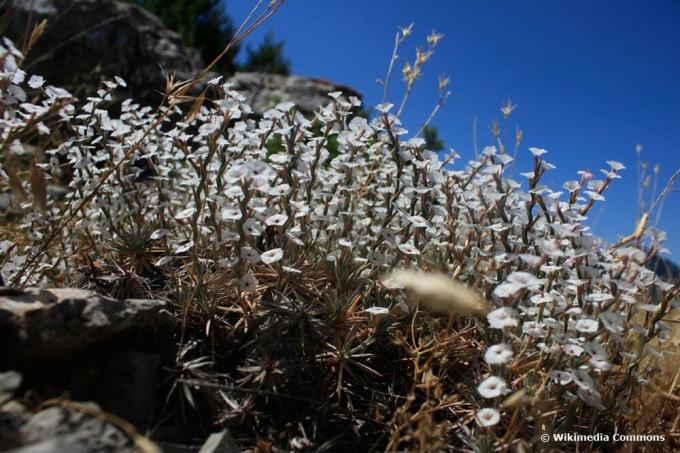
Gypsophila 'Flamingo' (Gypsophila paniculata)
- Growing bush-like, up to 120 cm high
- Blooms from June to August
- Richly branched panicles with semi-double pink flowers
- Leaves deciduous, coarse, gray to blue-green
- Good frost resistance
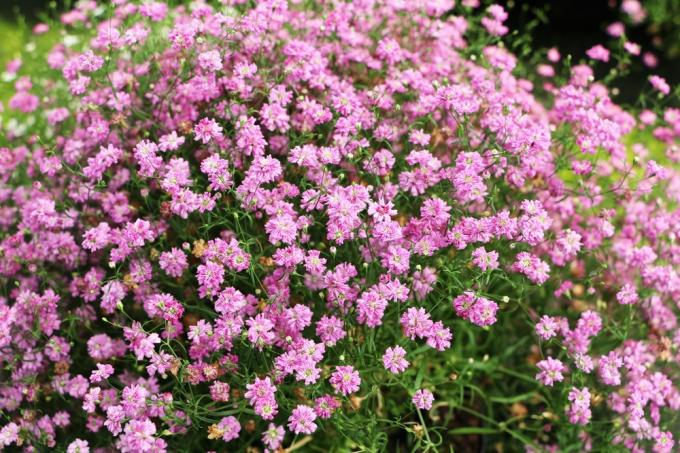
Candytuft (Iberis sempervirens)
- Evergreen spring bloomer
- Shows its full splendor during the flowering period from April to May
- Small, cruciform, brilliant white flowers
- Beautiful contrasts of flowers and dark green foliage
- Candytuft reaches heights of 15-30 cm
Tip: A dry, well-drained soil is just as important as a sunny location.
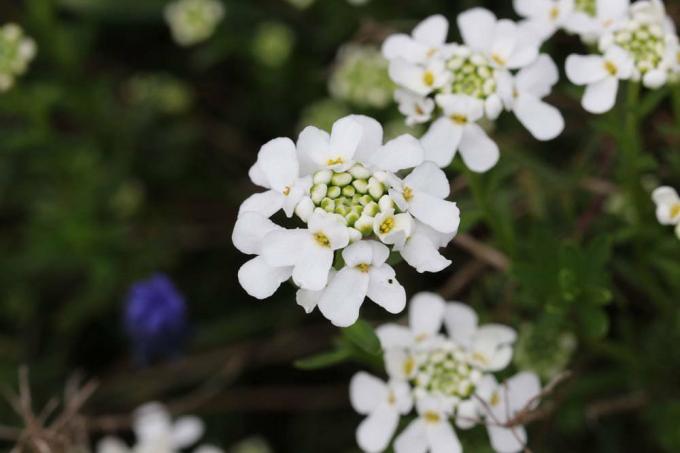
Stone herb 'Berggold' (Alyssum montanum)
- The golden yellow flowers are only in full glory in the sun
- Flowers from April to May
- Foliage gray-green and very contrasting
- Stone herb grows like a cushion
- Grows up to 15 cm high and 30-40 cm wide
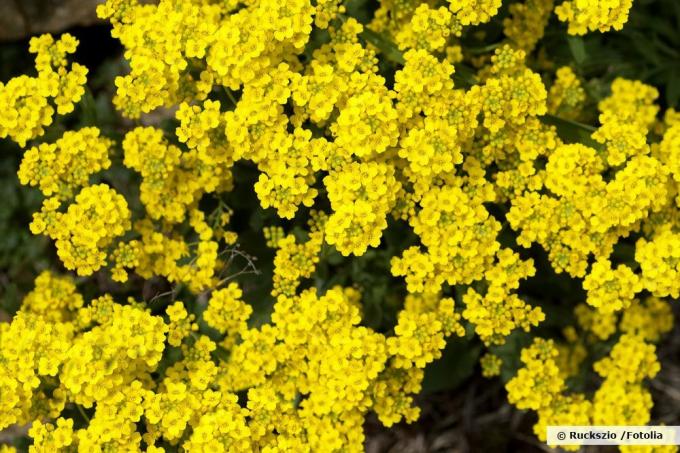
Dwarf palm lily (Yucca nana)
- Dwarf palm lily pretty but rare beauty
- Can cope with large temperature fluctuations, wind and heat
- Leaves fibrous, stiff and 10-25 cm long
- Magnificent white inflorescences up to 100 cm in size
- Palm lily hardy to minus 20 degrees

For the penumbra
Alpine Carnation (Dianthus alpinus)
- Dianthus alpinus up to ten centimeters in size
- Forms grass-like cushions
- Leaves dark green, lanceolate
- Flowers wheel-shaped, toothed on the edge and slightly scented
- In the colors white, pink or red
Tip: This alpine carnation is well suited for niches in a dry or natural stone wall.

Brown-stalked striped fern (Asplenium trichomanes)
- In nature it grows mainly between joints and rocks
- Because of this, as if made for a natural stone wall
- It does not attract attention with its flowers, but with its leaves
- They are deep green, simply pinnate and serrate on the leaf margin
- Leaves sit on brown stems
- Fern grows up to 20 cm high and just as wide

Yellow larkspur (Pseudofumaria lutea)
- Larksporn impresses with a long flowering period
- Blooms from May to October
- Special luminosity of the yellow funnel-shaped flowers
- The bluish-green, finely pinnate leaves are also very decorative
- Yellow lark spur grows to a height of between 25 and 35 cm
Tip: This plant can be planted very well in the joints of a dry stone wall.
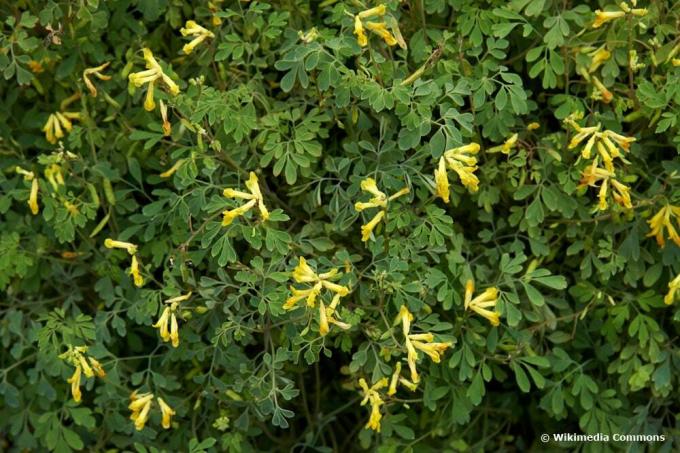
Gold sedum (Sedum floriferum)
- Widely used sedum plant
- Maximum 20 cm high
- Builds up large pads over time
- Leaves evergreen and succulent
- Flowers small, golden yellow, star-shaped
- Flowering period from July to August
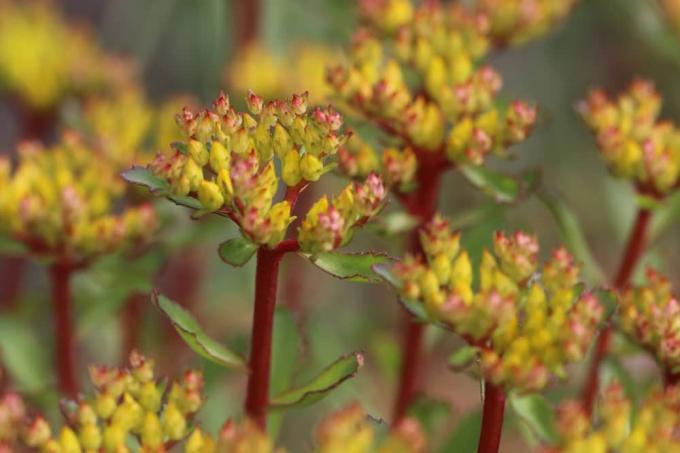
Gold droplets (Chiastophyllum oppositifolium)
- Evergreen, clumpy shrub
- Growth height up to 20 cm
- Forms rosettes of fleshy, succulent leaves
- Flowering period from June to July
- Overhanging flower clusters with teardrop-like single flowers
- Hardy and easy to care for
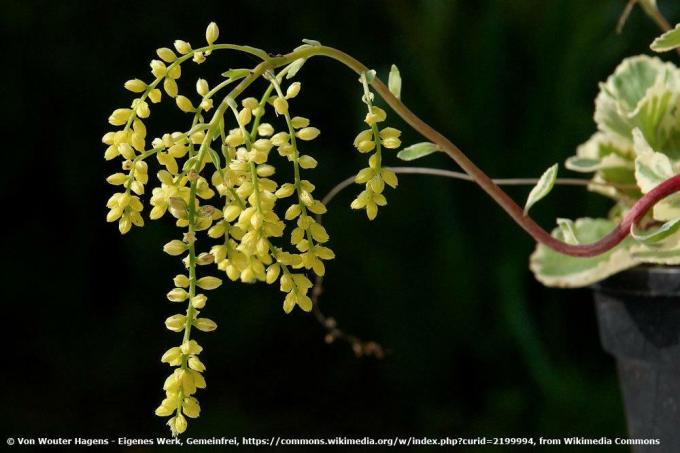
Hart's tongue fern (Asplenium scolopendrium)
- Leaves are very different from pinnate ferns
- In the case of the Hart's Tongue Fern, it is smooth, shiny and undivided
- Growth inclined and sweeping
- Reaches heights of 30-60 cm
- Requires a shady and chalky place
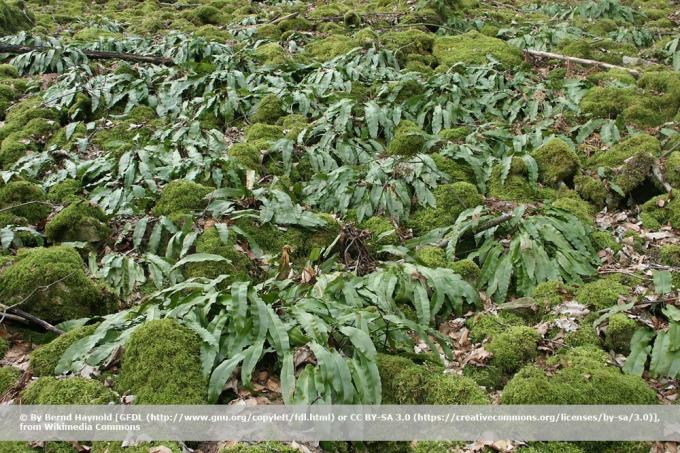
Carpathian cress (Arabis procurrens)
- Carpathian cress develops evergreen carpets
- Made of dark green, glossy leaves
- Flowers are small and white
- Floating on thin stems above the foliage
- Flowering time from April to May
- Growth height is 5-15 cm
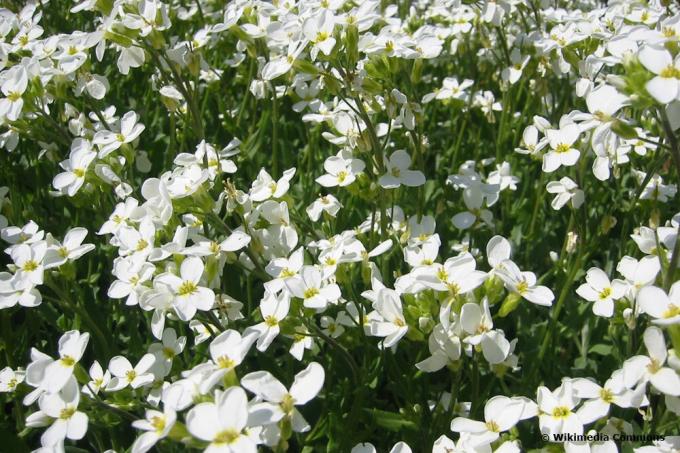
Wall cymbal (Cymbalaria muralis)
- Cymbal herb also known as wallflower
- Extremely decorative and runners-forming perennial
- Dark green, heart-shaped to round foliage
- Small pale purple flowers on reddish stems
- Flowering time from May to September
- Growth height up to 10 cm
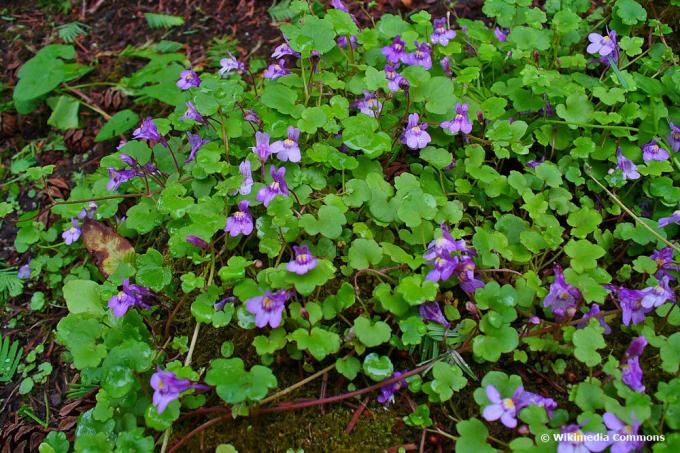
Moss saxifrage (Saxifraga arendsi)
- Moss saxifrage forms dense, rosette-like cushions
- Foliage evergreen, with a height of and about five inches
- Inflorescences up to 15 cm high
- Countless, small, fireplace pink-colored individual flowers
- Flowering time from March to April

Cushion bellflower (Campanula poscharskyana)
- Runners-forming plant for dry stone walls
- Long flowering period from June to September
- Growth is like a carpet
- Reaches heights of about 15 cm and widths of 30-40 cm
- Foliage deep green and very contrasting
- Flowers purple and bell-shaped
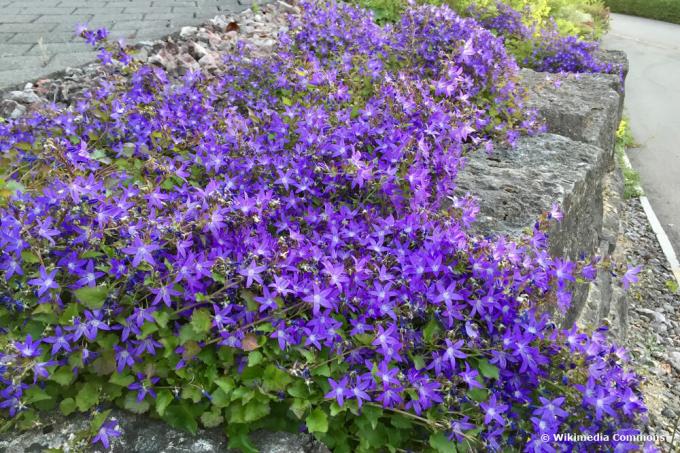
Potted fern (Polypodium vulgare)
- Wintergreen, native perennial
- Spreads like a carpet over runners
- Fronds dark green, slightly overhanging
- Simply feathered, with a leathery surface
- Growth height is between 20 and 40 cm
- Would like to stand in the same place for many years
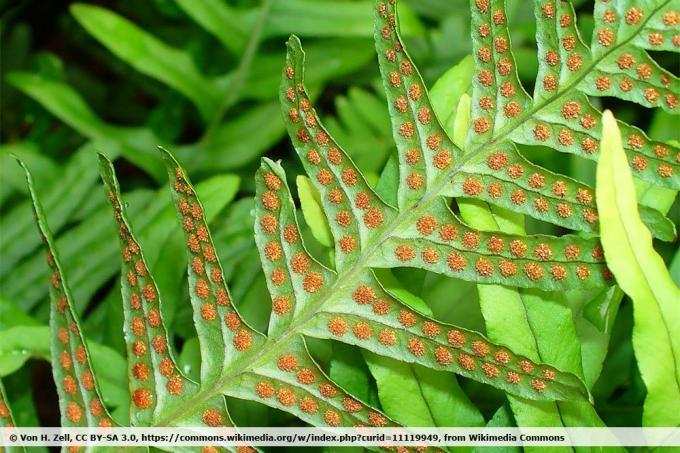
Eyelash fern (Woodsia obtusa)
- Largest ornament, the lush green, double-pinnate leaves
- Grows to a height of 30 cm and a similar width
- Initially upright and later overhanging
- Decorative foliage is also impressive in autumn and winter
- Is considered to be well frost hardy

For the shade
Alpine Columbine (Aquilegia alpina)
- Extremely decorative flowers
- Graceful and nodding, seem to float in the air
- Typical spurs are short and curved
- Flower color varies between light blue and blue-violet
- Flower stalks between 30 and 50 cm high
- Flowering time from May to June
- Leaves are rosette-like, deep green, lobed, pinnate and dull
- Columbine likes to settle on the base of the wall
Tip: A pruning is recommended after flowering.
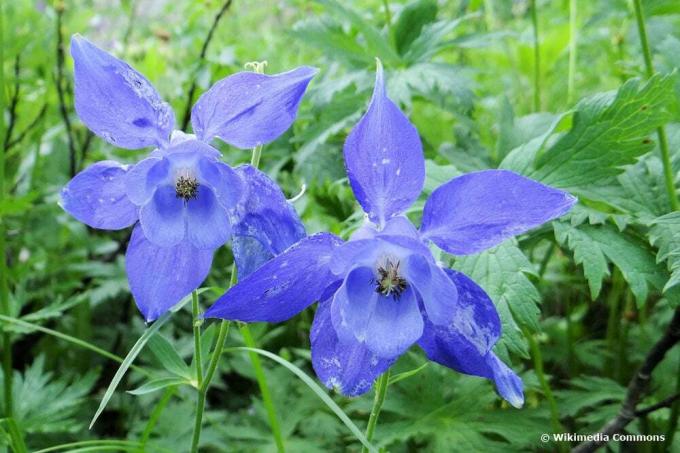
Roof houseleek (Sempervivum tectorum)
- Roof root grows cushion-forming
- Height up to 30 cm and diameter up to 25 cm
- Develops green rosettes with reddish brown at the tips
- Leaves succulent and broadly lanceolate
- Flowering period June to July
- Makes 20-60 cm long flower stems
- With white, yellowish or pink single flowers
- Rosette dies after flowering
- Always forms new rosettes
Tip: Houseleek but also other types of sedum are very suitable for planting stone joints in dry stone walls.

Wall rue (asplenium ruta-muraria)
- Wall rue is one of the ferns
- Fronds gray-green and coarse
- Hardly longer than 10 cm
- Leaves two or three pinnate
- Leaf blades diamond-shaped or fan-shaped, usually finely toothed in front
- Wall rhombus can often be found in wall joints
Tip: One of the peculiarities of this plant is that it prefers nutrient-rich limestone.
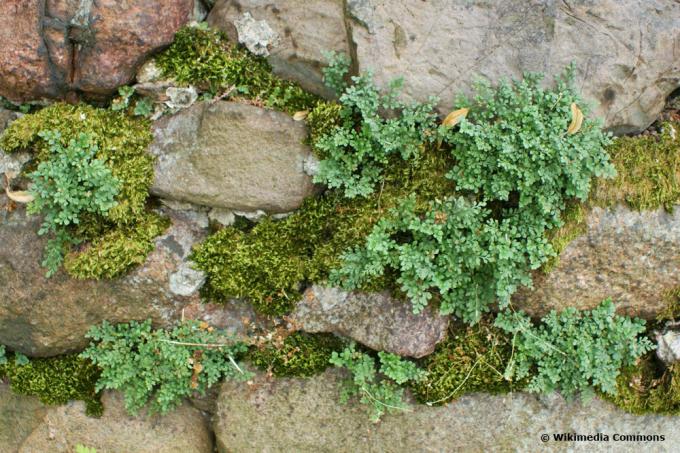
Porcelain flowers (Saxifraga x urbium)
- Porcelain flowers form compact cushions
- Pretty evergreen leaf rosettes
- Filigree, red, pink or white star flowers
- Flowers arranged in panicles
- Flowering time from May to June
- Reaches heights of up to 30 cm

For the top of the wall
Mountain Sandwort (Arenaria montana)
- Grows cushion-like and prostrate
- Growth heights up to 10 cm
- Flowers simple, white, cupped
- Flowering period May to June
- Leaves pale green, finely hairy
- For sunny and partially shaded wall crowns

Spring cinquefoil (Potentilla neumanniana)
- Native, creeping, carpet-forming perennial
- Mats of green, finger-shaped leaves
- Simple, small, golden yellow cup-shaped flowers
- Flowers from April to May
- Often surprises with a second bloom
- Grows up to 10 cm high and loves the sun
Tip: One of their peculiarities is that there is no danger of snail damage.
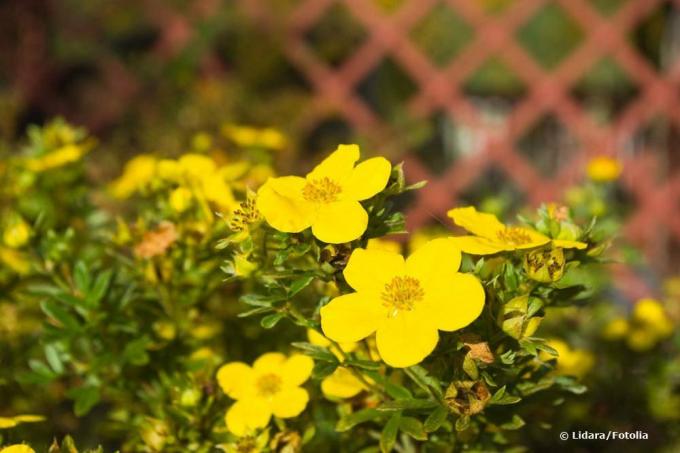
Large-flowered stone purse (Aethionema grandiflorum)
- Pillow-like growth
- Upright flower stems up to 20 cm high
- Pink flowers appear from May to July
- Low wall, good location
- In addition, a sunny spot
- In the wrong location, perennial only short-lived
Tip: After flowering, pruning is recommended, and winter protection is recommended in snowless winters.
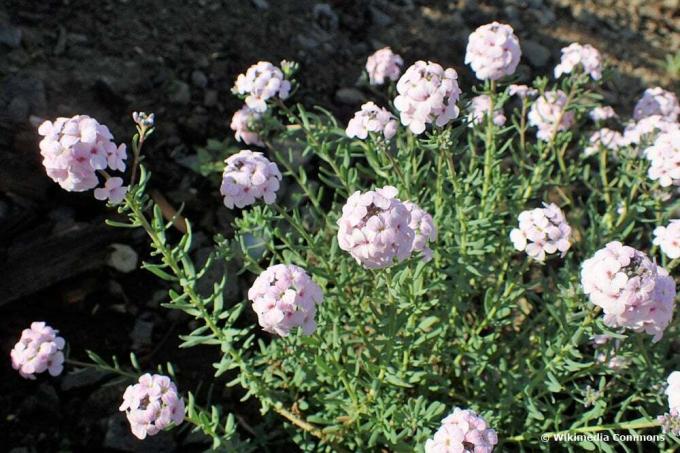
Pillow Soapwort (Saponaria ocymoides)
- Carpet-forming perennial
- Spreads quickly
- Grows up to 20 cm high
- A feast for the eyes, especially during flowering from May to July
- Countless purple-pink, umbel-shaped flowers
Tip: The location on the wall should definitely be low in nutrients.
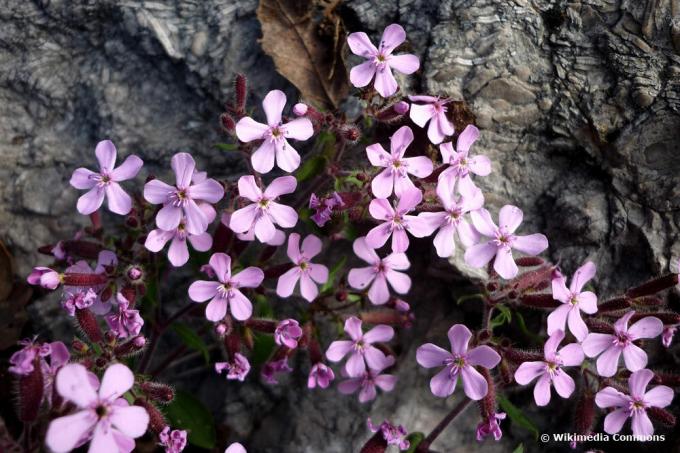
Creeping gypsophila (Gypsophila repens)
- Native, richly flowering species with an overhanging habit
- Quickly green larger areas of a natural stone wall
- With an infinite number of white, veil-like flowers and gray-green, frosted leaves
- Flowering time is from May to July
- Growth height is a maximum of 25 cm
- Particularly suitable for stone joints and wall crowns
Tip: Gyposophila repens is well suited for wall crowns but also for planting wall joints.
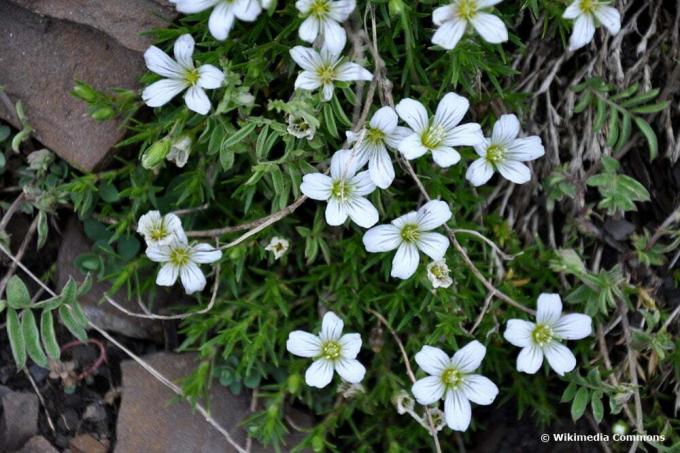
Ostrich saxifrage (Saxifraga cotyledon)
- Develops rosette-like leaves
- Over time, covers natural stone walls with thick cushions
- Ideally in sunny to partially shaded places
- The highlight are the panicle-shaped, white flowers with reddish markings
- Flower stem up to 50 cm high
- Flowering period from June to July

Dwarf cluster bell (Edraianthus pumilio)
- Rarity with a cushion-like growth
- Leaves linear to linear-lanceolate, gray-green, glabrous with a slight down
- Attractive blue-violet, bell-shaped flowers
- Blooms from June to July
- Under favorable conditions a maximum of five centimeters high
- Sunny place recommended
- Very suitable for dry stone walls and calcareous substrates
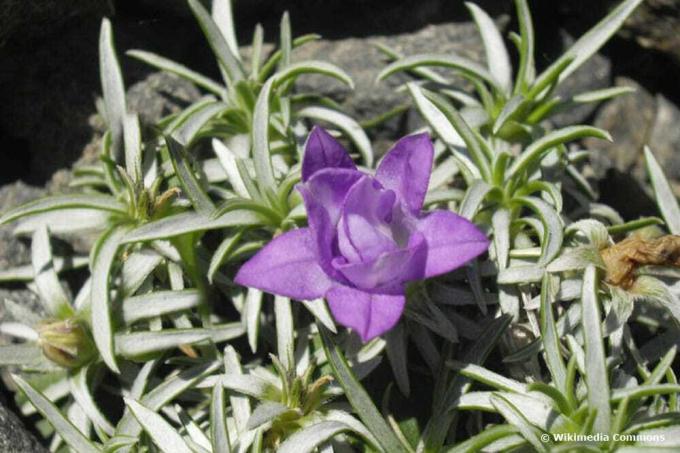
frequently asked Questions
Warmth-loving herbs such as rosemary, thyme or lavender are particularly suitable for a dry stone wall.
The joints in the dry stone wall should ideally be filled with earth when the wall is being laid. When choosing plants, soil and light conditions must be taken into account.
Commercially available potting soil is not recommended, it is often over-fertilized. Top soil, especially of molehills, is more suitable.



